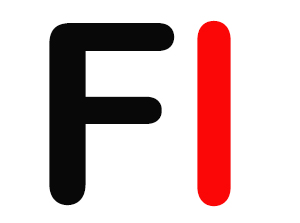 Many people overlook the value of having a professional business card that accurately reflects your brand image, yet this small piece of paper can be an important part of your collateral package. It’s often the first item prospects receive from you, so it’s your first opportunity to make a strong, positive impression on them.
Many people overlook the value of having a professional business card that accurately reflects your brand image, yet this small piece of paper can be an important part of your collateral package. It’s often the first item prospects receive from you, so it’s your first opportunity to make a strong, positive impression on them.
The preponderance of do-it-yourself online business-card printing companies is an interesting and somewhat troubling phenomenon. With limited exceptions, it’s fairly easy to spot an inexpensively produced card. When you choose to “go cheap” on your business cards, what message does that send to those with whom you wish to do business? Are you really doing yourself any favors by missing out on the opportunity to start building a positive brand image right from the start?
Cheaper isn’t always better when it comes to first impressions. Give clients a great first impression .
Enlist the help of a professional designer unless you have the requisite skills to design your business card yourself.
Ideally, this person’s also tasked with designing your other collateral (letterhead, brochures, website, etc.), so it’ll be intuitive to carry your brand image through from those pieces to your card.
Keep it simple.
Business cards are typically just 3.5″ x 2″ (except when they’re not–see below), so you don’t have too much space with which to work. Don’t make your logo too large, don’t make the type too small to be comfortably read, and don’t be afraid to use white space.
Keep to the standard business card size–unless you’re the adventurous type.
There are things you can do to a 3.5″ x 2″ card to differentiate yourself (e.g., rounded corners), but going with an unusual shape can be tricky. A round card, for instance, is quite memorable, but it certainly won’t fit in standard business-card holder devices. You must be willing to trade convenience for memorability if you choose an unconventional shape or size.
Content Tips
Be deliberate in choosing the information to appear on your card.
What’s most important? Your name certainly needs to be there, along with the name of your company (via your logo), your phone number and your e-mail address. Space permitting, you can add your physical address, fax number, cell-phone number and company website address, if desired. Don’t clutter things up too much–as with the design, simpler and cleaner is always better.
Keep the back blank, or use it for non-critical information.
How often will people see the back of your business card? Traditional card storage modes assume that side is blank. If you do wish to put copy on it, be sure the information is of a supplemental nature: e.g., your company’s mission or tagline. While business cards should promote your brand identity, they shouldn’t be confused with advertising.
The Bottom Line
Think about how you use other people’s business cards when you make decisions regarding your own. Do you get frustrated when you can’t quickly find the information you need? Or the type is too small to read? Or printed in a font that’s hard to decipher? Do cheaply produced cards make you think less of the person or company represented? Does it take you a while to realize whose card it is, or what company that person works for?
Don’t make those same mistakes when designing your business card. Make sure it’s a positive reflection of both you and your company, and it mirrors your well-defined brand identity.












